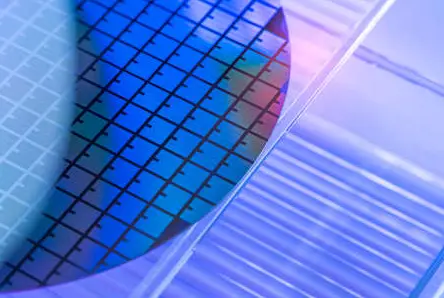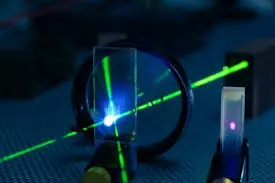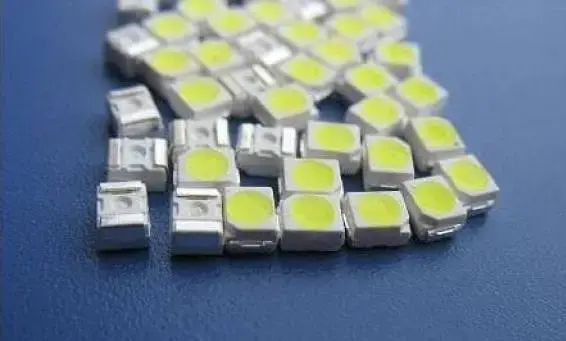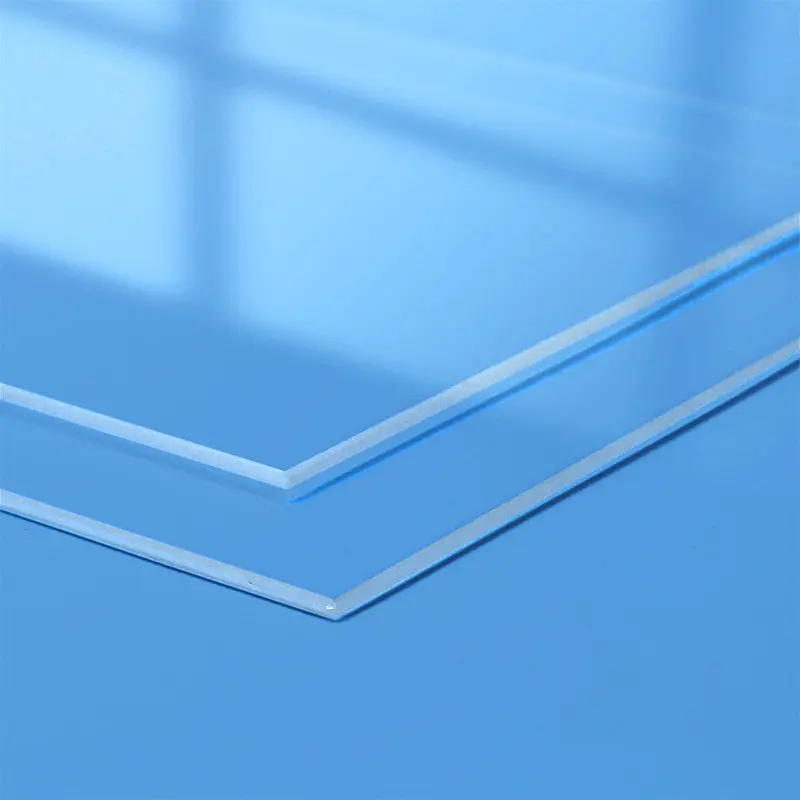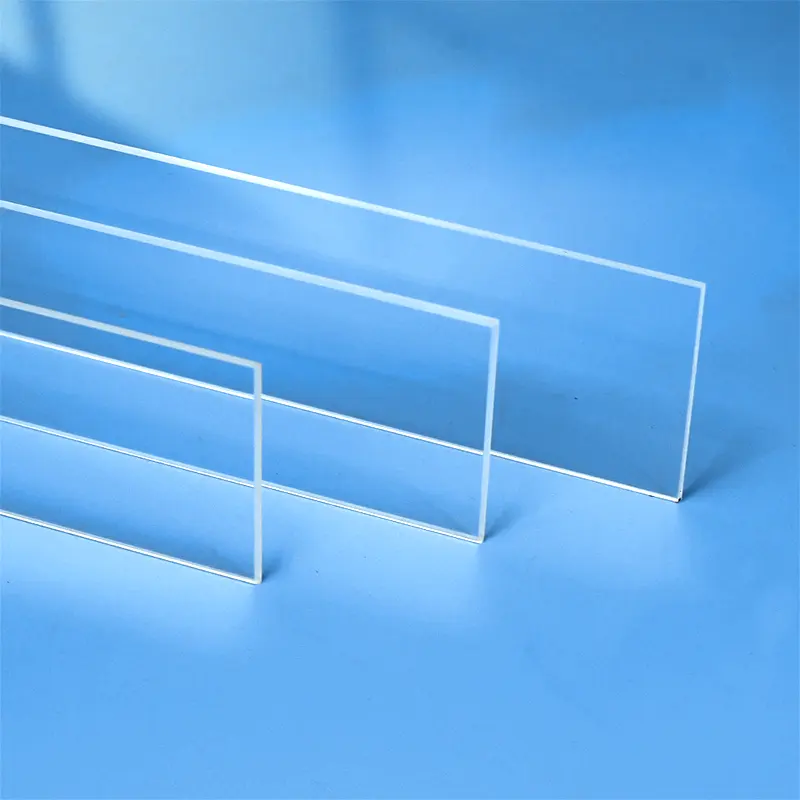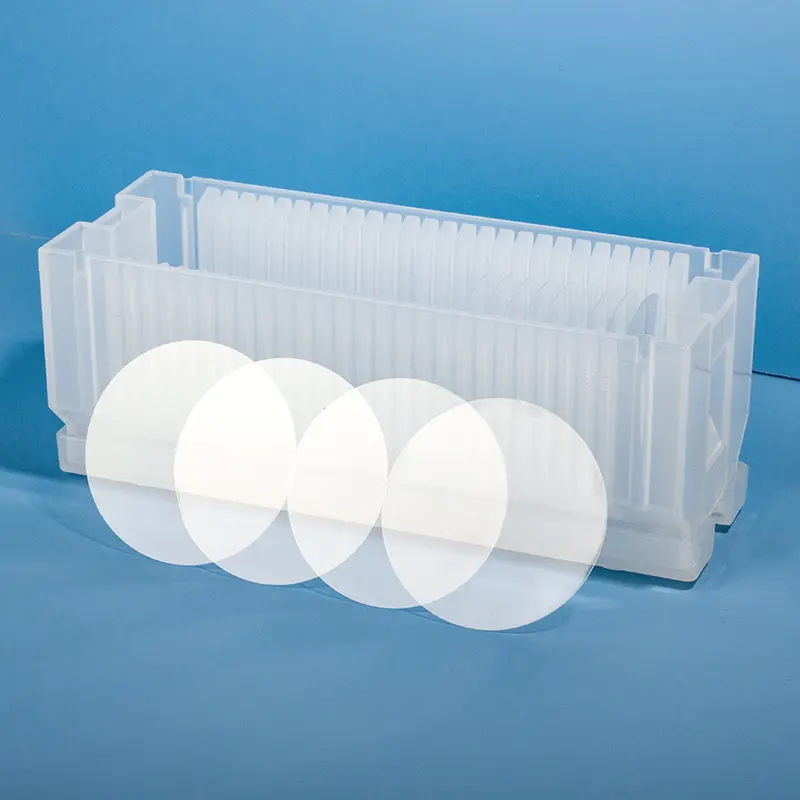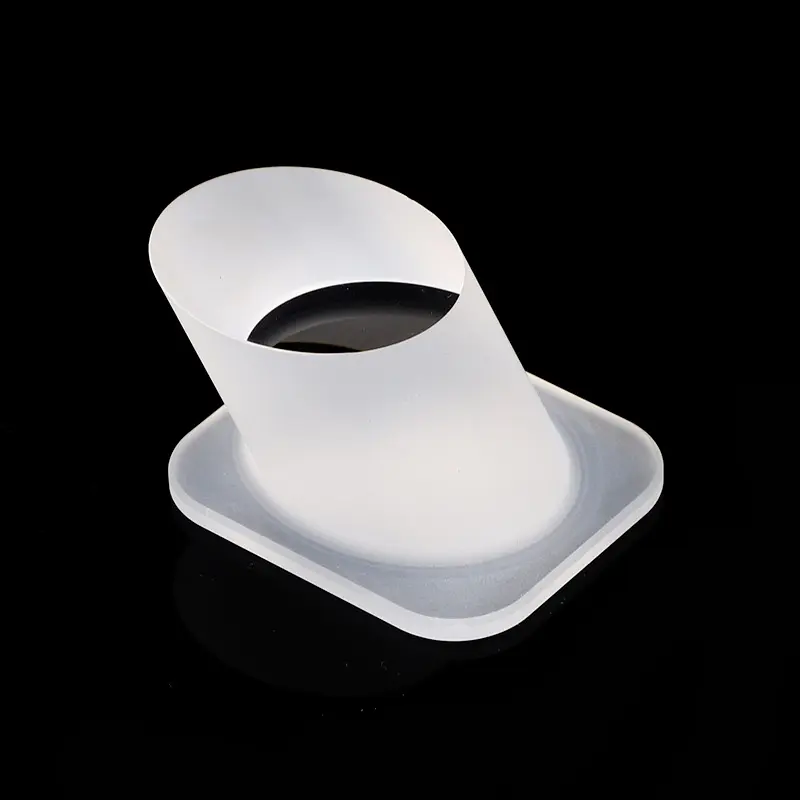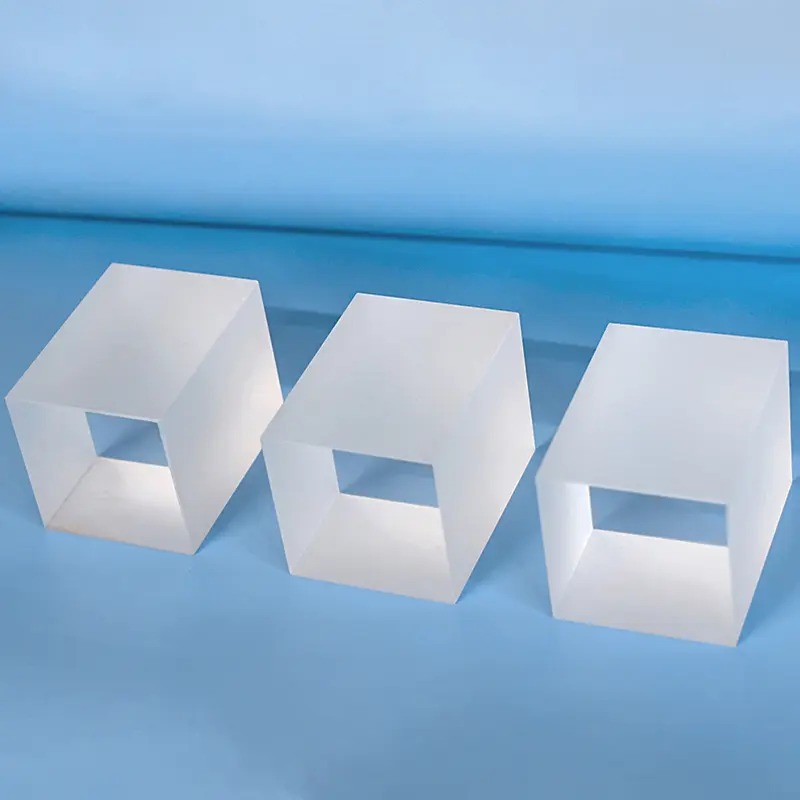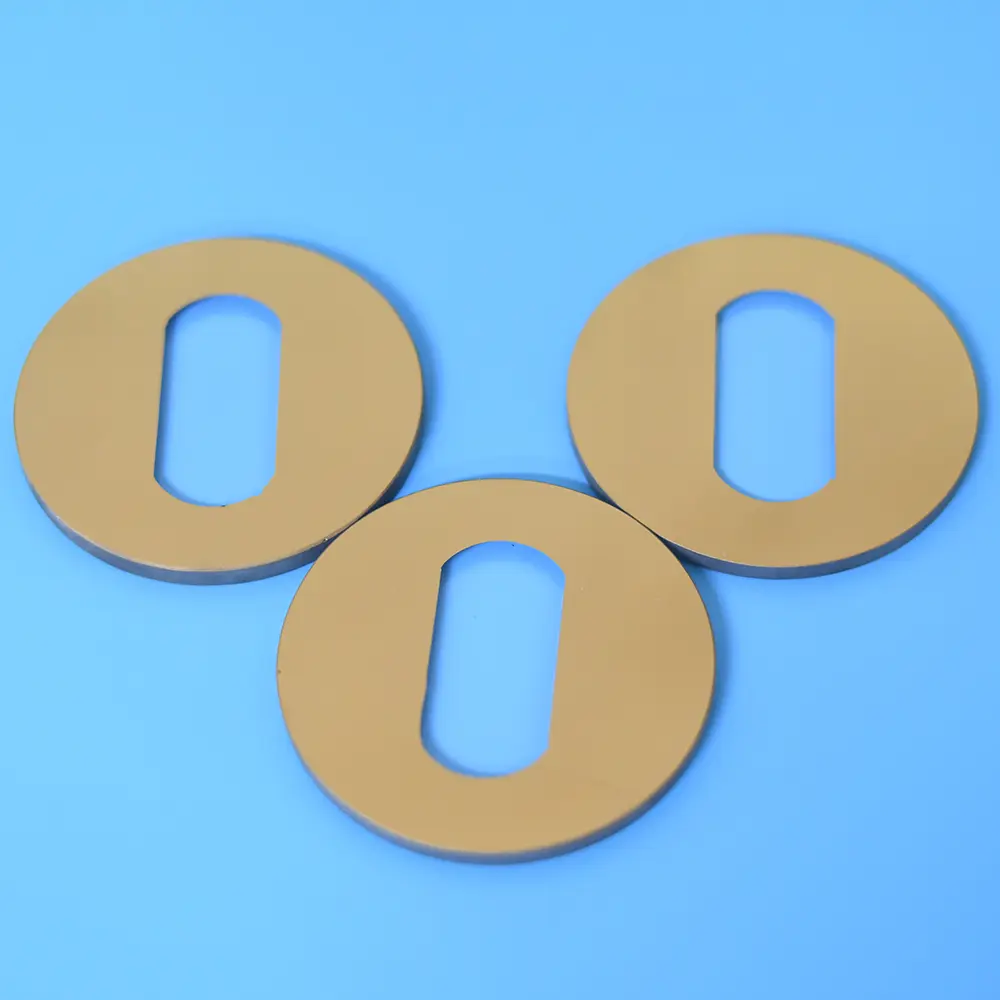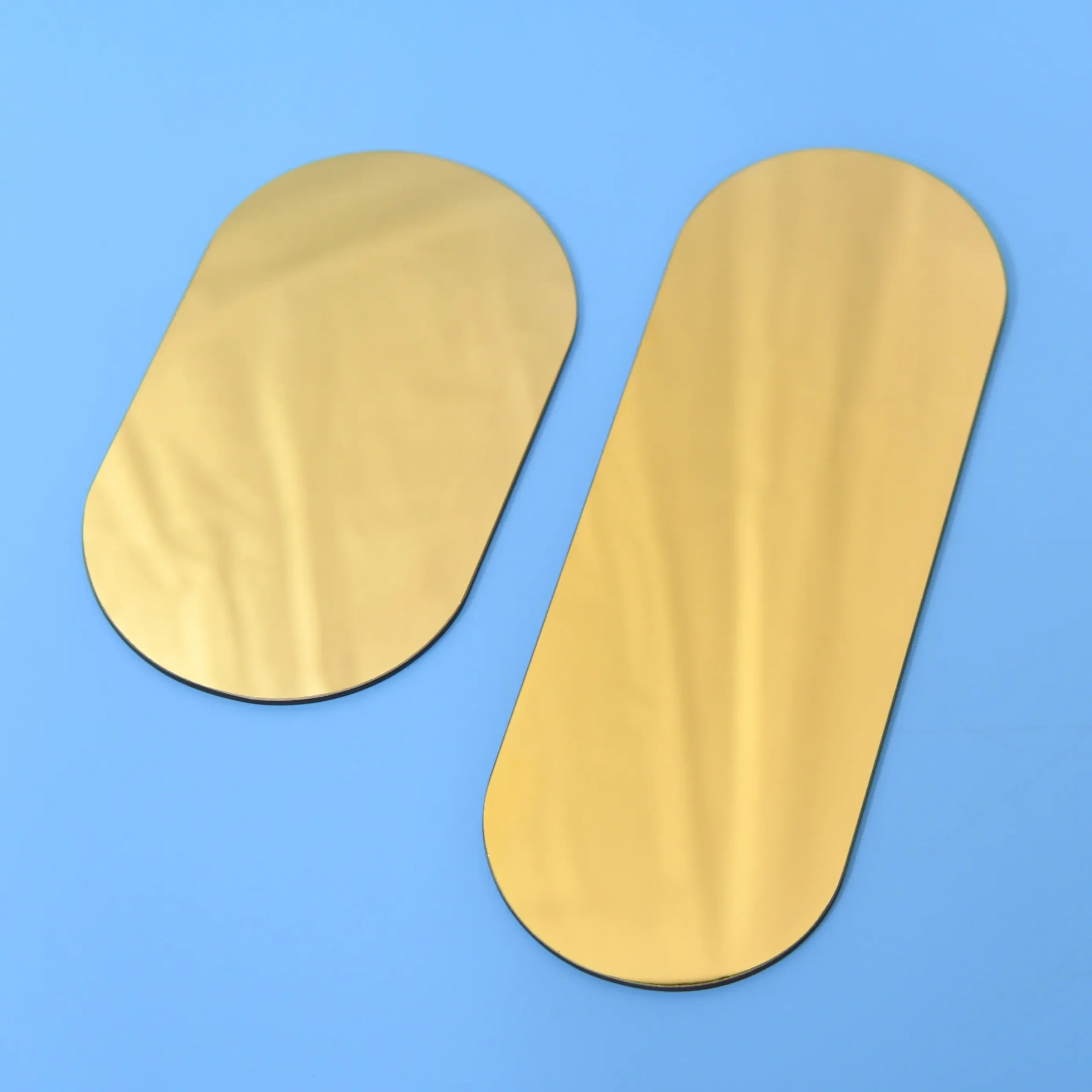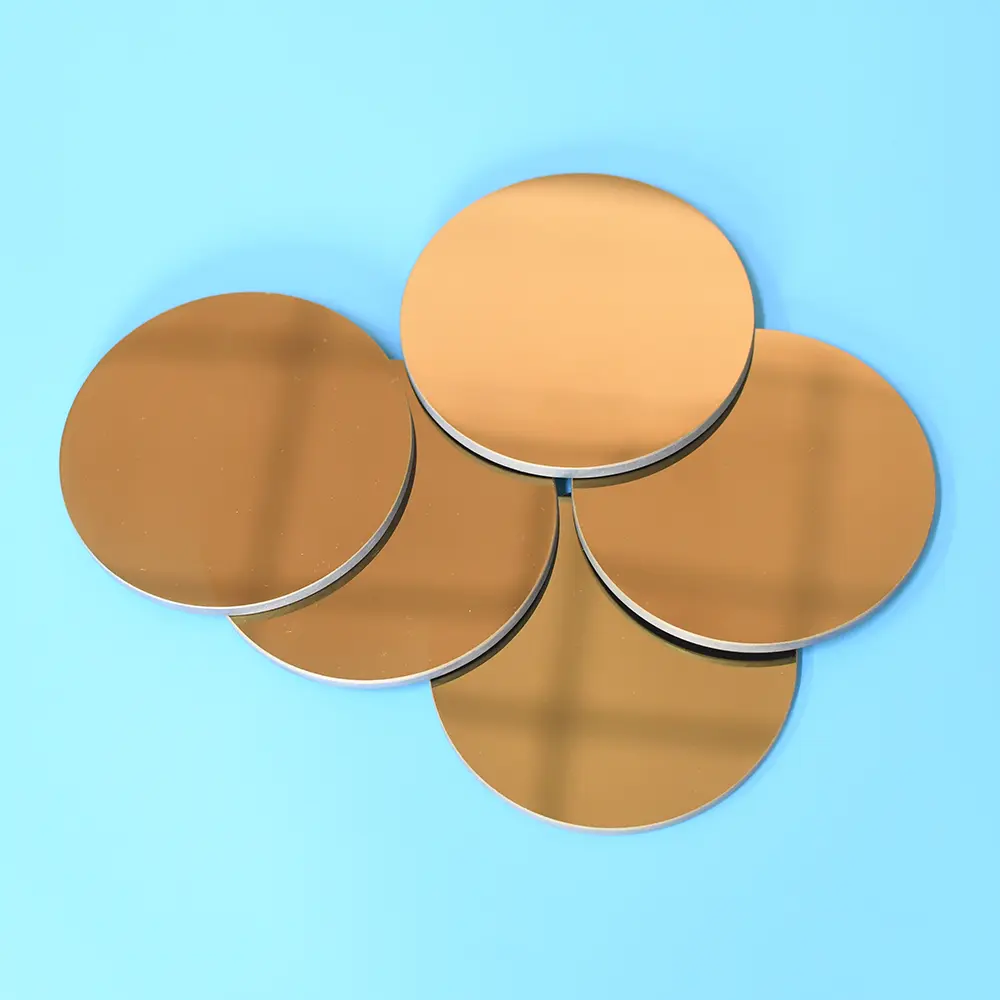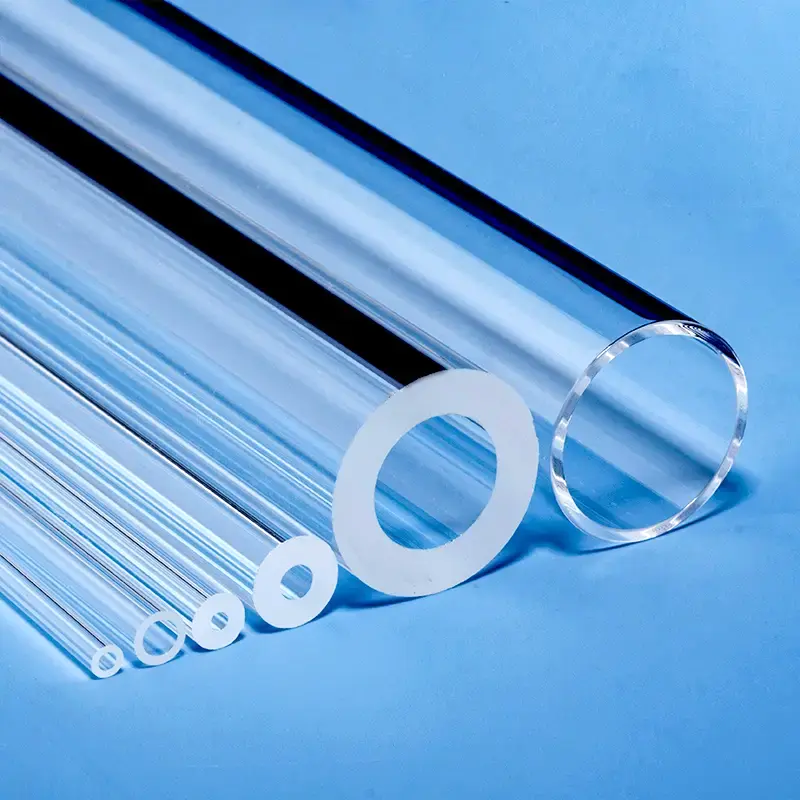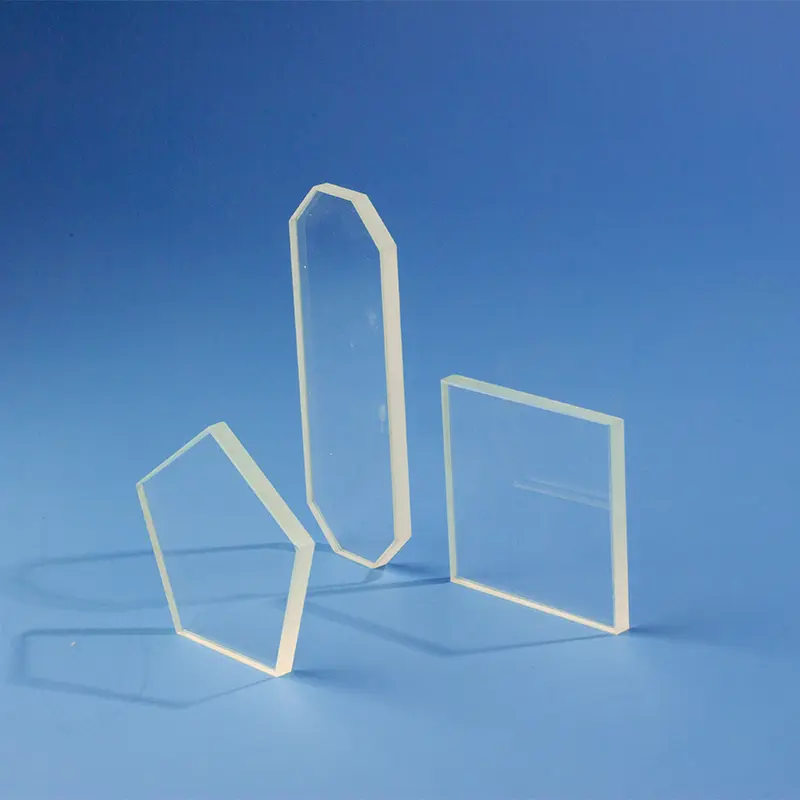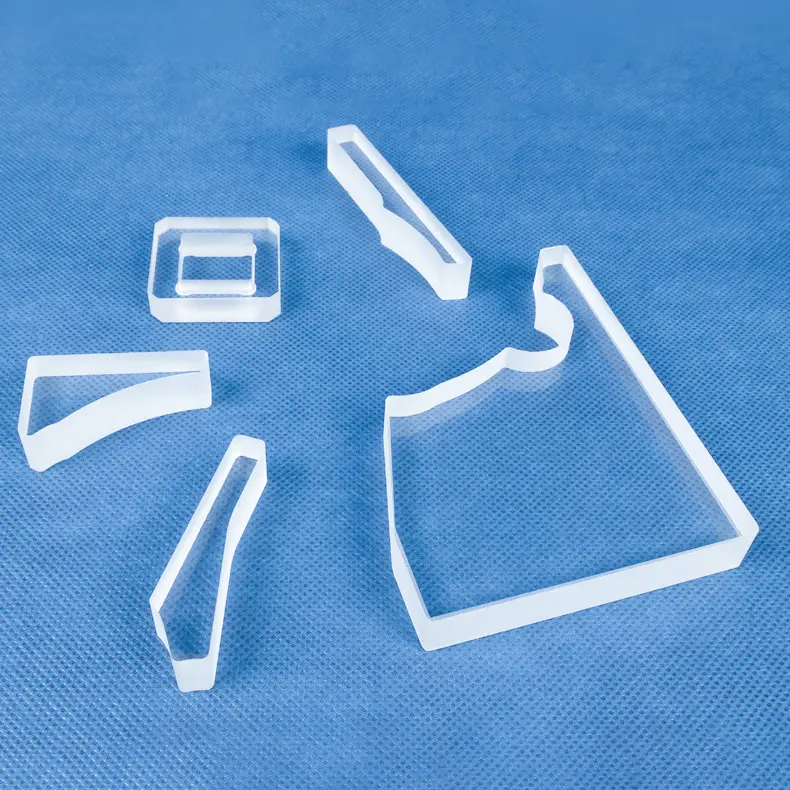Our Quartz Discs are precision-engineered from high-purity fused silica. We offer custom fused silica discs and windows, tailored for demanding optical, semiconductor, and laser applications. Expect superior UV transmission, thermal stability, and chemical resistance.
| Property Content | Property Values |
|---|---|
| SiO2 | 99.99% |
| Density | 2.2×10³ kg/cm³ |
| Hardness | 5.5 - 6.5 Mohs' Scale 570 KHN 100 |
| Tensile Strength | 4.8×10⁷ Pa (N/mm2) (7000 psi) |
| Compression Strength | >1.1×10⁹ Pa (160,000 psi) |
| Coefficient of Thermal Expansion | 5.5×10⁻⁷ cm/cm·°C (20°C-320°C) |
| Thermal Conductivity | 1.4 W/m·°C |
| Specific Heat | 670 J/kg·°C |
| Softening Point | 1730°C (3146°F) |
| Annealing Point | 1210°C (2210°F) |
| Strain Point | 1120°C (2048°F) |
| Work Temperature | 1200°C (2192°F) |
| Electrical Resistivity | 7×10⁷ ohm cm (350°C) |
| Size | Customized |
| Logo | Customized Logo Accept |
High Purity and Transparency
Quartz discs are made from high-purity silicon dioxide and exhibit exceptional transparency, particularly across the ultraviolet to infrared spectral range. This makes them ideally suited for optical applications.
High-Temperature Resistance
Quartz discs can withstand extremely high temperatures, with a softening point around 1730°C, and can be used continuously at 1100°C, and can tolerate short-term temperatures up to 1450°C. This makes them suitable for high-temperature environments.
Chemical Stability
Quartz discs demonstrate excellent resistance to most chemicals, with the exception of hydrofluoric acid, making them very stable for chemical laboratory and industrial uses.
Low Thermal Expansion Coefficient
Quartz discs have a very low thermal expansion coefficient, which means their dimensions change very little with temperature variations. This is essential for applications requiring precise dimensional control, such as in precision instruments and high-temperature equipment.
Application Scenario
Semiconductor Industry
Quartz discs play a significant role in semiconductor manufacturing, serving as carriers and processing substrates for wafers. They are used in critical process steps such as photolithography, oxidation, diffusion, and chemical vapor deposition, which demand extremely high levels of purity, temperature resistance, and dimensional precision.
In semiconductor manufacturing, quartz discs primarily serve as carriers and substrates for silicon wafers during processing. They are utilized as base materials in crucial process steps like photolithography, oxidation, diffusion, and chemical vapor deposition (CVD). Their high temperature resistance, chemical inertness, and precise dimensional control are essential for ensuring the performance of semiconductor devices.
The optical properties of quartz discs are critical because their applications in the optoelectronics industry require high transparency and broad spectral transmission. These characteristics make quartz discs ideal materials for manufacturing optical lenses, prisms, windows, and other optical components. They are also well-suited for use in laser equipment and optical communication systems.
In LED manufacturing, quartz discs primarily function as high-temperature and chemical-resistant support materials. They provide stable physical support and protection for LED chips during the fabrication process, especially under high-temperature and corrosive environments, ensuring the stability of the production process and the quality of the final products.
Frequently asked questions
We specialize in the end-to-end manufacturing of high-purity quartz glass components. Our core product lines include:
Quartz Tubing & Rods: A wide range of diameters and specifications.
Quartz Plates & Discs: Precision-cut and polished for optical and industrial use.
Quartz Labware: A full suite of standard and custom glassware, including beakers, flasks, and boats.
Semiconductor-Grade Quartz: High-purity components like process tubes and carriers for semiconductor fabrication.
Custom Fabricated Components: We can produce complex parts tailored to your unique designs and specifications.
Yes. Custom fabrication is at the core of our business. With over a decade of specialized experience, we partner with companies to provide expert OEM/ODM services. Our capabilities include welding, grinding, drilling, polishing, bending, and other precision processing techniques to create components that meet your exact requirements.
Quality is paramount in our manufacturing process. We are an ISO 9001:2015 certified manufacturer, ensuring that our processes meet international quality management standards.Our products also undergo rigorous SGS testing for purity and performance. We use high-purity raw materials (up to 99.998% SiO2) to produce fused quartz and fused silica products with exceptional thermal stability, high-temperature resistance, and chemical inertness.
We've streamlined our process to be as efficient as possible:
Submit Your RFQ: Send us your technical drawings, specifications, and requirements via our website contact form or email.
Rapid Response: You can expect an initial response within minutes and detailed communication within half an hour.
Design & Proposal: We will deliver a detailed design proposal and a competitive quote within 24 hours.
Prototyping & Production: Upon approval, we move swiftly from prototyping to full-scale production to meet your deadlines.
Partnering with Aoxin Quartz offers several key advantages:
Proven Expertise: With 10+ years in the industry, we have the technical knowledge to tackle complex challenges.
One-Stop Solution: We manage the entire production process, from sourcing high-purity raw materials to fabricating and finishing complex components.
Competitive Value: Located in a major quartz production hub, we leverage an efficient supply chain and advanced manufacturing to offer exceptional quality at a competitive price point.
Dedicated Partnership: Over 90% of our clients become long-term partners. We are committed to your success through responsive service, reliable quality, and innovative solutions.


